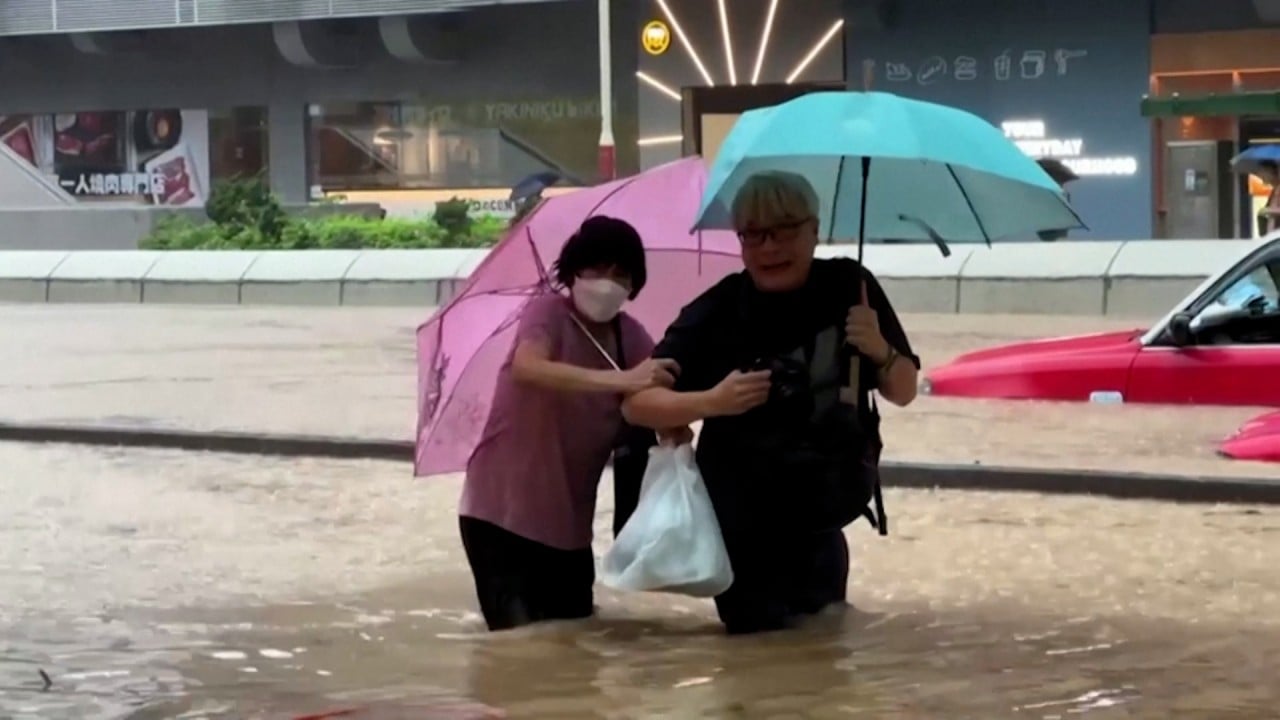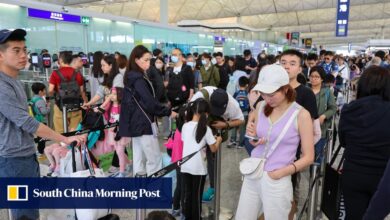Hong Kong counts cost of record-setting rains as public anger over official response mounts
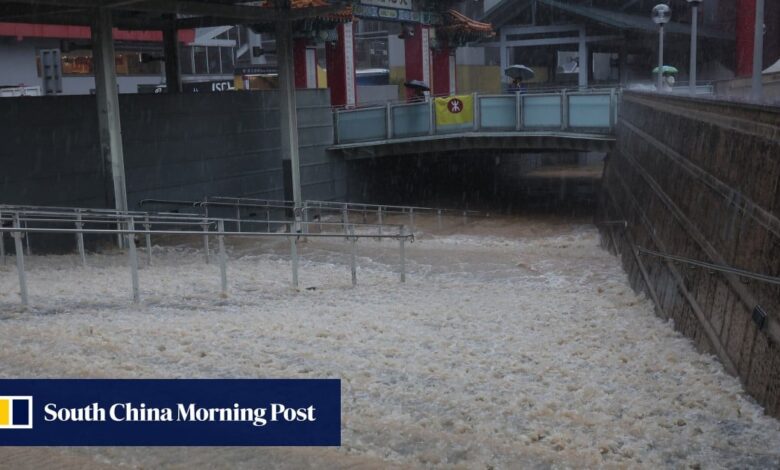
[ad_1]
“The rainstorm this time is ‘once in 100 years’. The rainfall recorded in 24 hours was amounting to a quarter of the city’s total annual level,” Chief Executive John Lee Ka-chiu said after inspecting the site of a landslide at Yiu Tung estate in Shau Kei Wan on Friday evening.
“I agree that a review can be done in terms of the warning system. While the room might not be huge under the limitations of technology [in forecasting rainfall], can we disseminate more information in views of boosting the safety factor and considering public preparation?”
Asked whether he would apologise over the government’s handling of the crisis, Lee said his administration had focused on keeping the situation under control but there was always room for improvement.
Leader agrees on need for warning system review for storm-battered Hong Kong
Leader agrees on need for warning system review for storm-battered Hong Kong
Authorities said 144 people had sought treatment at hospital with four of them still in serious condition. Firefighters received at least 343 calls for assistance and helped 20 injured individuals and 110 people to evacuate. Some 335 people, mostly living in the North district along the border with mainland China, had taken refuge in 15 temporary shelters as of 7.30pm.
The stock market remained closed for the day, and classes were cancelled, although the government left it up to employers to sort out arrangements with employees on turning up for work.
Authorities had received reports of 151 fallen trees, 60 localised floods and 39 landslides as of Friday evening. The Education Bureau received more than 20 reports of damaged facilities at schools, adding principals could decide whether to resume classes on Saturday or Monday.
The rains intensified rapidly on Thursday, catching most residents off guard – only 90 minutes separated the government’s lowest-level amber warning at 9.25pm and the highest black signal at 11.05pm.
Between 11pm and midnight, 158.1mm (6.2 inches) of rain was recorded at the headquarters of the Observatory, the most in an hour since records began in 1884, as the downpour triggered flash floods across the city
Torrents of water brought traffic on major thoroughfares and the Cross-Harbour Tunnel to a crawl, as drivers tried to inch their vehicles forward.
Images of people turning plastic road dividers into makeshift rafts or waiting on car roofs circulated on social media.
Cars were stranded for at least two hours on Ting Kok Road in Tai Po amid a 2km (1.2 mile) traffic jam, while the lower deck of one bus was filled with ankle-deep water. KMB said 30 of its vehicles became stuck on the roads on Thursday night but no passenger injuries were reported.
In Wong Tai Sin, an urban district in Kowloon seldom hit by flooding, muddy water covered almost the entire lower floor of the Temple Mall North.
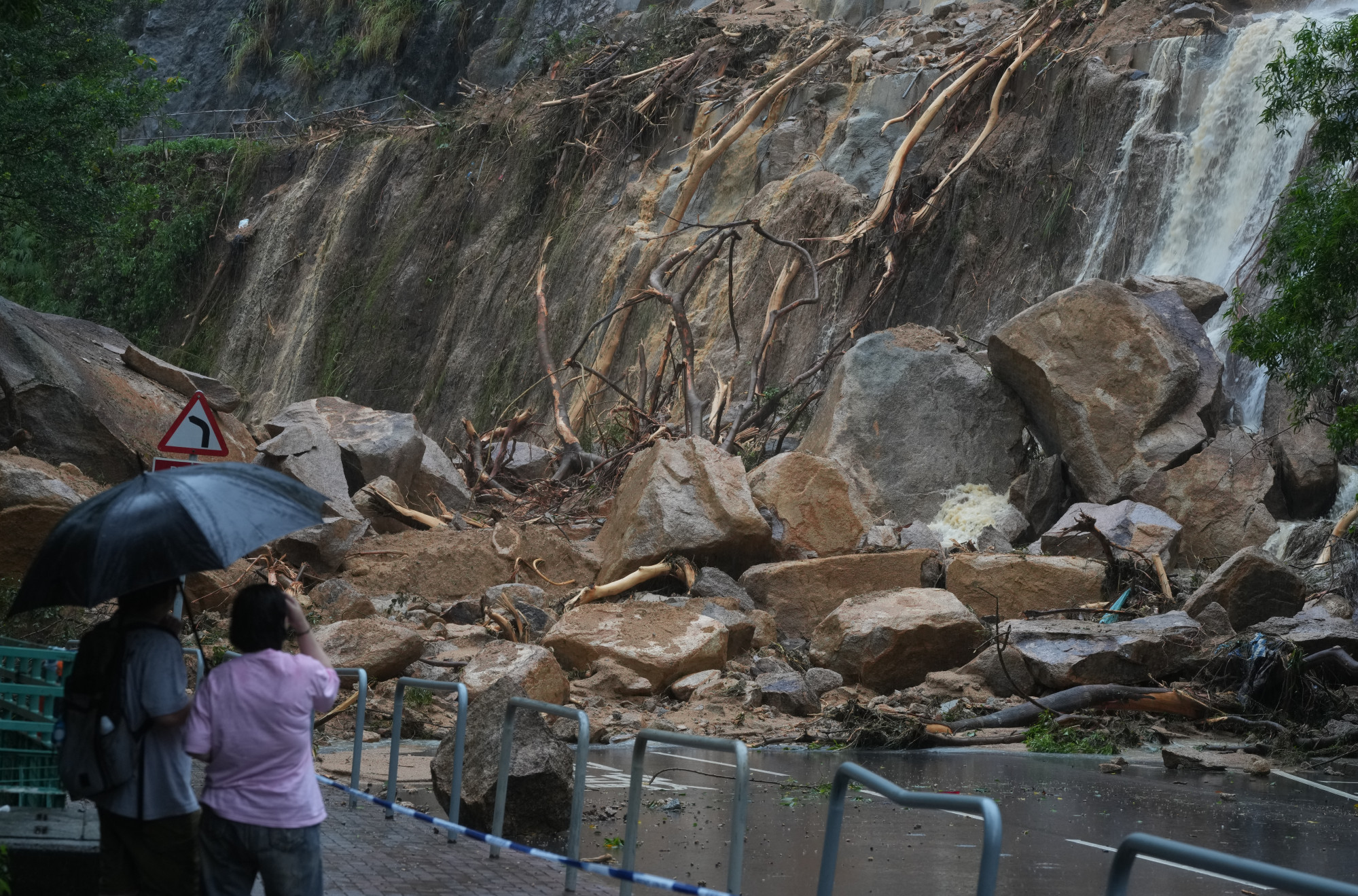
On the southern tip of Hong Kong Island, thousands of residents were isolated after two landslides destroyed the only road leading into Shek O Village, sparking concern among residents and community leaders they could be without road access for a month.
The city’s railway operator MTR Corporation suspended services between Shek Kip Mei and Choi Hung when the rain flooded Wong Tai Sin station and the outdoor platforms at Kowloon Tong station.
Daniel Chan Chi-cheung, a resident of Wong Tai Sin for 24 years, said he had never seen such severe flooding on Lung Cheung Road and urged the MTR Corp to set a timeline for resuming services at Wong Tai Sin station.
“I know it takes time but we need to know when we can get back to our normal routine instead of hearing them saying they are carrying out recovery work,” he said.
“The Kwun Tong line is a crucial hub for a lot of residents and we can’t just make detours to Lok Fu or Diamond Hill without knowing when the service will completely return to normal.”
The MTR Corp said it was confident service on the Kwun Tong line would resume on Saturday when the Wong Tai Sin station was expected to reopen, but facilities including elevator, escalators and platform screen doors, still needed repairs.

Thousands of households had their electricity supply affected by the torrential rain, including 500 families living at a private estate which was still without power as of 8pm.
About 400 families in Chai Wan and 60 households along Stanley Beach Road suffered a temporary loss of electricity. Another 3,000 families in North Point, Shau Kei Wan and Chai Wan were also hit with power interruptions.
In Chai Wan, a car park at the Wan Chui Estate was half-filled with water on Friday morning, leaving vehicles almost completely submerged.
Residents living near the border, including in Sha Tau Kok and Ta Kwu Ling, reported serious flooding, with some believing the deluge was partly exacerbated by the build-up of leaves and other debris in drainage systems following Super Typhoon Saola. One pig farm reported a loss of over HK$1 million (US$127,560).
Some residents in the northern area also complained they were given only 16 minutes to prepare for a release of reservoir water by Shenzhen, which they feared would worsen conditions.
Hong Kong villagers scramble to prepare for reservoir water release amid floods
Hong Kong villagers scramble to prepare for reservoir water release amid floods
The local government announced at 11.44pm on Thursday the city had been informed by authorities across the border that water would be discharged from the reservoir starting at midnight, warning there might be flooding risks in some parts of the New Territories.
Under the current system, Shenzhen should notify Hong Kong of water discharging arrangements three hours in advance or “as soon as possible” during emergencies.
Security minister Chris Tang Ping-keung revealed the city was informed of the move 45 minutes in advance, but stressed the water release was a safety measure that benefited both cities.
The government announced on Friday evening the Heung Yuen Wai and Man Kam To control points would be closed until further notice, as workers carried out repairs on their power supply.
No 2 official Eric Chan Kwok-ki underscored the “low predictability” of what he called a “once-in-500 years” rainstorm.
He said senior officials had worked through the night and issued four statements to keep the public informed. He defended Lee, who came under attack from unhappy residents for only publishing two social media posts urging the public to stay safe as the crisis unfolded.
“Throughout the night, the chief executive was giving us direction and advice to tackle the situation,” he added.
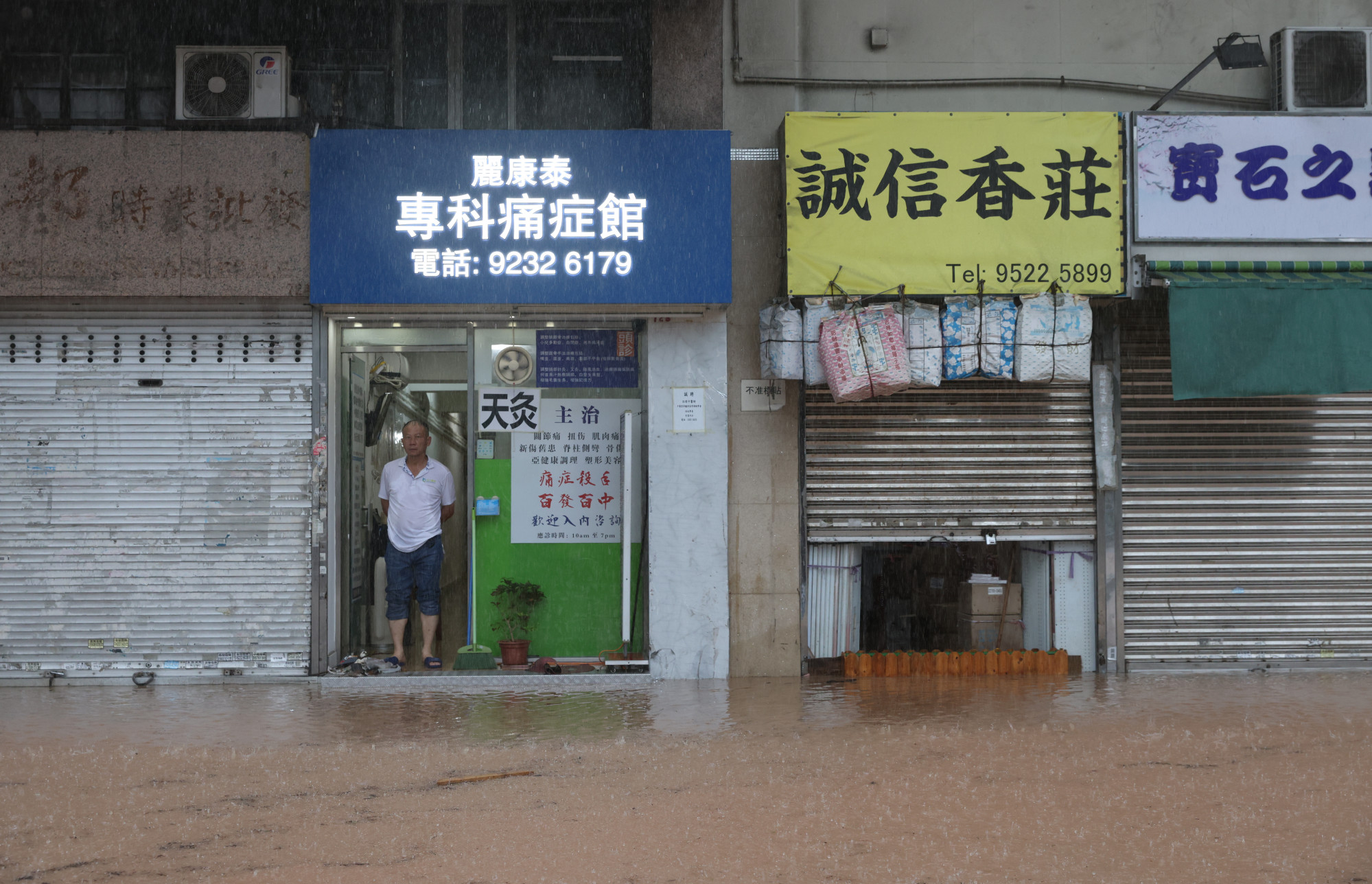
The deluge prompted the government to declare at 5.30am that the city was under “extreme conditions” for the first time under a mechanism introduced in the wake of Super Typhoon Mangkhut five years ago, requiring employers to adopt the same flexible working arrangements for staff as when a No 8 typhoon warning signal was in effect.
The extreme condition warning would end at midnight, he said.
Chan added that the government had yet to estimate the economic loss.
Asked why the administration did not issue a warning to residents via SMS by using the HK$150 million emergency system it developed during the pandemic, Deputy Chief Secretary for Administration Cheuk Wing-hing argued the platform was designed for emergencies such as power failures.
“With the rainstorm warning, it’s not necessary to use [another alert] to state the obvious,” he said.
Additional reporting by Oscar Liu
[ad_2]
Source link


